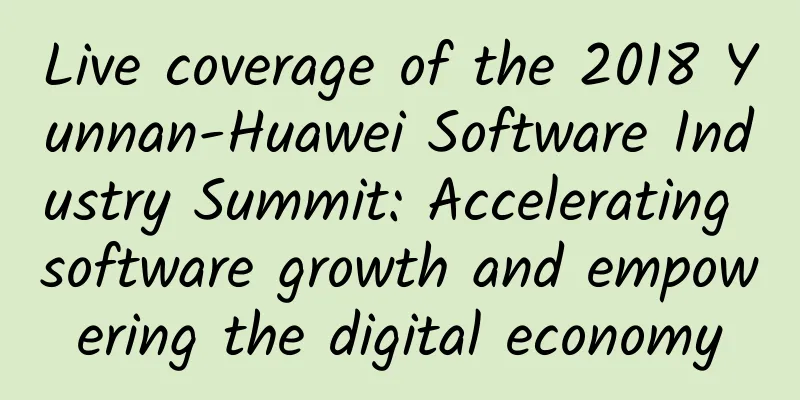5 web trends you need to know about in 2021

|
On December 14, 2020, a massive network outage caused Google's services for users in the United States to be interrupted or downtime. Services such as Google Calendar, Gmail, Google Workspace, Hangouts, and Google Classroom were interrupted or crashed, devices with integrated Google Assistant stopped working, and third-party applications such as Pokémon Go that used Google's backend services also encountered problems. This incident affected the work and life of people working and studying remotely at home.
Network outages have once again demonstrated the importance of the network to people's daily work and life. With most organizations' employees still working remotely from home this year, network outages will become more frequent and more severe. In 2021, network trends will promote the agility and security of organizational businesses, and most importantly, the strategy of always being online. 1. Business leaders will adopt a software-first approach to deployment In addition to paying for electricity, data center operating costs are its main management costs, usually the salaries of data center operations staff and the cost of purchasing software solutions. Organizations that adopt a hardware-first strategy are often limited in software choices, which can lead to higher operating costs. Going forward, organizations will focus on adopting software solutions that better suit their needs and then choose their hardware and the corresponding on-premises data center or colocation data center. 2. Private cloud adoption will grow rapidly Many organizations are re-evaluating the costs and security risks associated with adopting public clouds. For some time, many organizations believed that the best cloud computing platforms were provided through public providers such as AWS, Microsoft Azure, and Google Cloud. Although public clouds can help organizations avoid the cost and complexity of managing their own IT infrastructure, private clouds will become more attractive after security issues with public clouds, a stricter regulatory environment, and significantly lower costs for private clouds. 3. Remote work will drive more edge computing adoption As organizations' employees work remotely from home and move users further away from centralized data centers, more and more organizations will seek to adopt edge computing solutions to better facilitate decentralized operations. A survey report released by research firm Gartner in 2018 showed that only about 10% of the data generated by organizations was created or processed outside of centralized data centers or cloud platforms. However, the company predicts that by 2025, this figure will reach 25%, and the coronavirus epidemic in 2020 has accelerated the implementation of digital transformation by more and more organizations, and this proportion will be higher. By moving data activities from centralized networks to locations closer to end users, organizations can improve the security, speed, connectivity and scalability of networks where employees work remotely. 4. Organizations will become more strategic in multiple cloud computing environments Although adopting a single cloud computing environment may seem like the simplest option, it is not the most strategic. More and more organizations are adopting hybrid clouds, which can provide the advantages of on-premises data centers and public clouds to achieve tighter security and control over certain data, as well as provide scalability as needed. Similarly, organizations will adopt multiple public clouds depending on the use case. The solution will vary from organization to organization as business leaders approach each decision more strategically based on their unique needs. 5. Data centers will become more automated More and more organizations will leverage data center automation and intent-based networking (IBN) to automate the design, build, deployment, and operation of their networks. This will eliminate the heavy lifting that IT teams handle on a daily basis, so they can focus on more strategic work. Similar to how Uber and Lyft automate the entire ride-sharing process, organizations will use intent-based networking (IBN) to free up human capital, rather than relying on manual work to book rides, provide navigation for drivers, plan routes to destinations, pay fees, and constantly solve operational challenges. While organizations still have a lot of work to do to strengthen their networks and take a more strategic approach to cloud computing, it’s important to recognize the progress that has been made over the past few decades. |
<<: City managers can now predict the future using 5G and digital twins
>>: What kind of storm will 5G, the Internet of Things, and artificial intelligence bring?
Recommend
16 Useful Bandwidth Monitoring Tools to Analyze Network Usage in Linux
Why are today's networks so slow? Are you hav...
Application performance improved by 70%, exploring the implementation principle and implementation path of mPaaS full-link stress testing
Business Background As the mobile development ind...
VMISS 30% off, Hong Kong CN2/Korea CN2/US CN2/Japan IIJ monthly payment starts from 3.5 Canadian dollars
VMISS is still offering a 30% discount this month...
LOCVPS Hong Kong cloud traffic upgrade, 20% off high bandwidth Hong Kong VPS monthly payment starts from 29.6 yuan
LocVps recently upgraded the traffic of VPS packa...
Wi-Fi 6 and cellular networks are powering a hyperconnected future
Wi-Fi 6 is maturing into a new role as a compleme...
[Black Friday] Justhost has a 30% discount for a limited time, 22 data centers in Russia, the United States, Singapore, etc. are available
Justhost.ru launched a Black Friday promotion yes...
[Black Friday] Hostodo: $13.99/year-512MB/16G NVMe/3TB/Las Vegas & Spokane & Miami Data Center
Hostodo's Black Friday promotion this year is...
spinservers: $109/month - 2*E5-2650L v3 CPU, 64G memory, 1.6T SSD hard disk, 10TB/10Gbps, San Jose data center
If you need a high-end server, you can also take ...
LisaHost newly launches Hong Kong native IP triple-network CMI backhaul, streaming media unlocks large bandwidth starting from 88 yuan/month
Lisahost has launched a new Hong Kong ISP-type na...
Reconnect the campus network after it is disconnected. Use crawlers to fix it!
[[433698]] Preface Hello, everyone. I am Dasai Ge...
UFOVPS is 50% off, top up 200 yuan and get 20 yuan, Japan CN2 GIA/Hong Kong CN2 GIA/US high-defense VPS monthly payment starts from 19 yuan
UFOVPS has released the biggest discount this yea...
HTTP interview, 99% of interviewers like to ask these questions
[[322727]] Differences between HTTP and HTTPS HTT...
The property management company asked for 300,000 yuan as an “entry fee” for 5G to enter the residential area. The real problem is the problems beyond technology.
The 5G waves are rising higher and higher. In ear...
Huang Li of iSoftStone: Everything is connected in the 5G era. Let’s discuss the opportunities and challenges of enterprise digital transformation!
[51CTO.com original article] On September 18, the...









